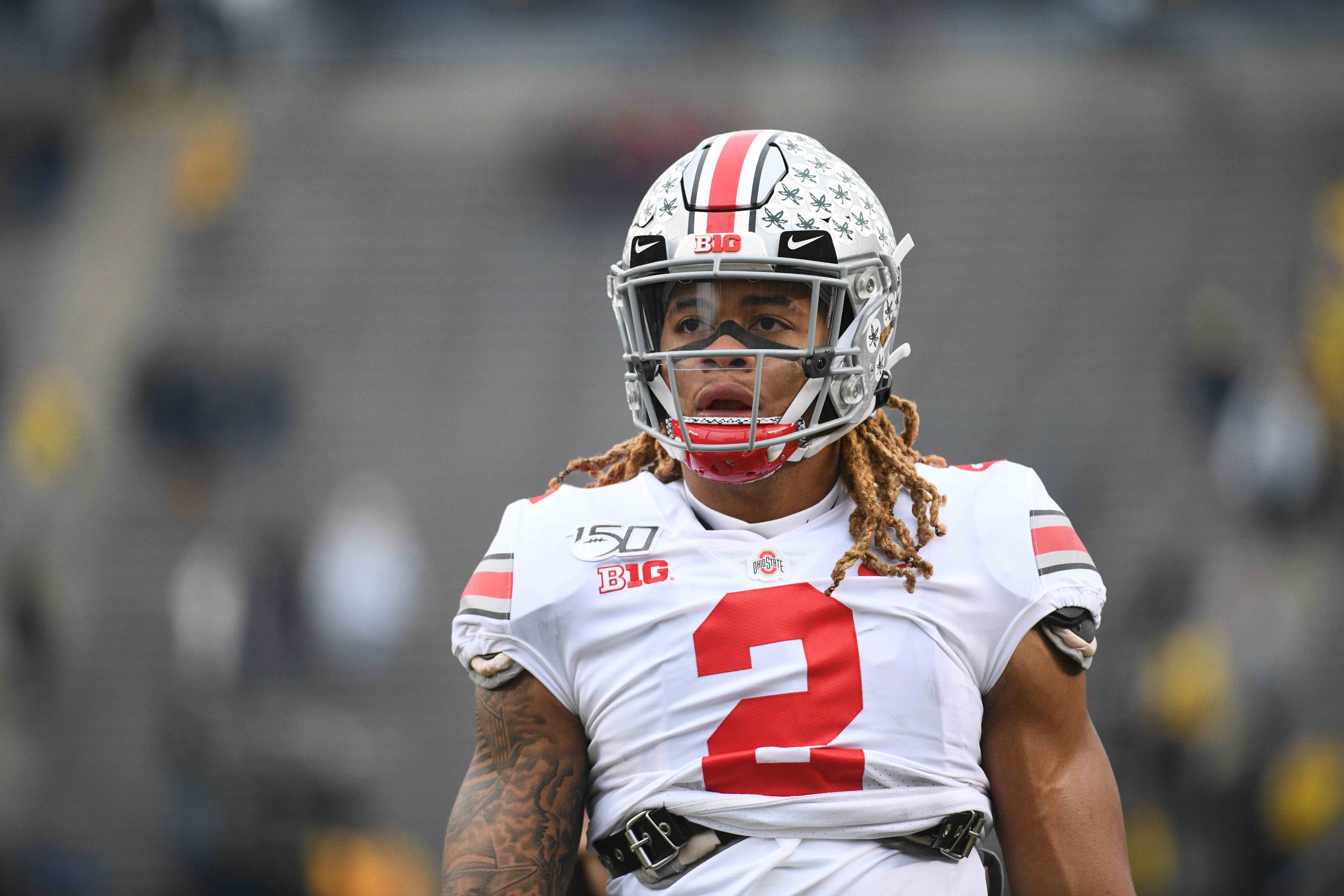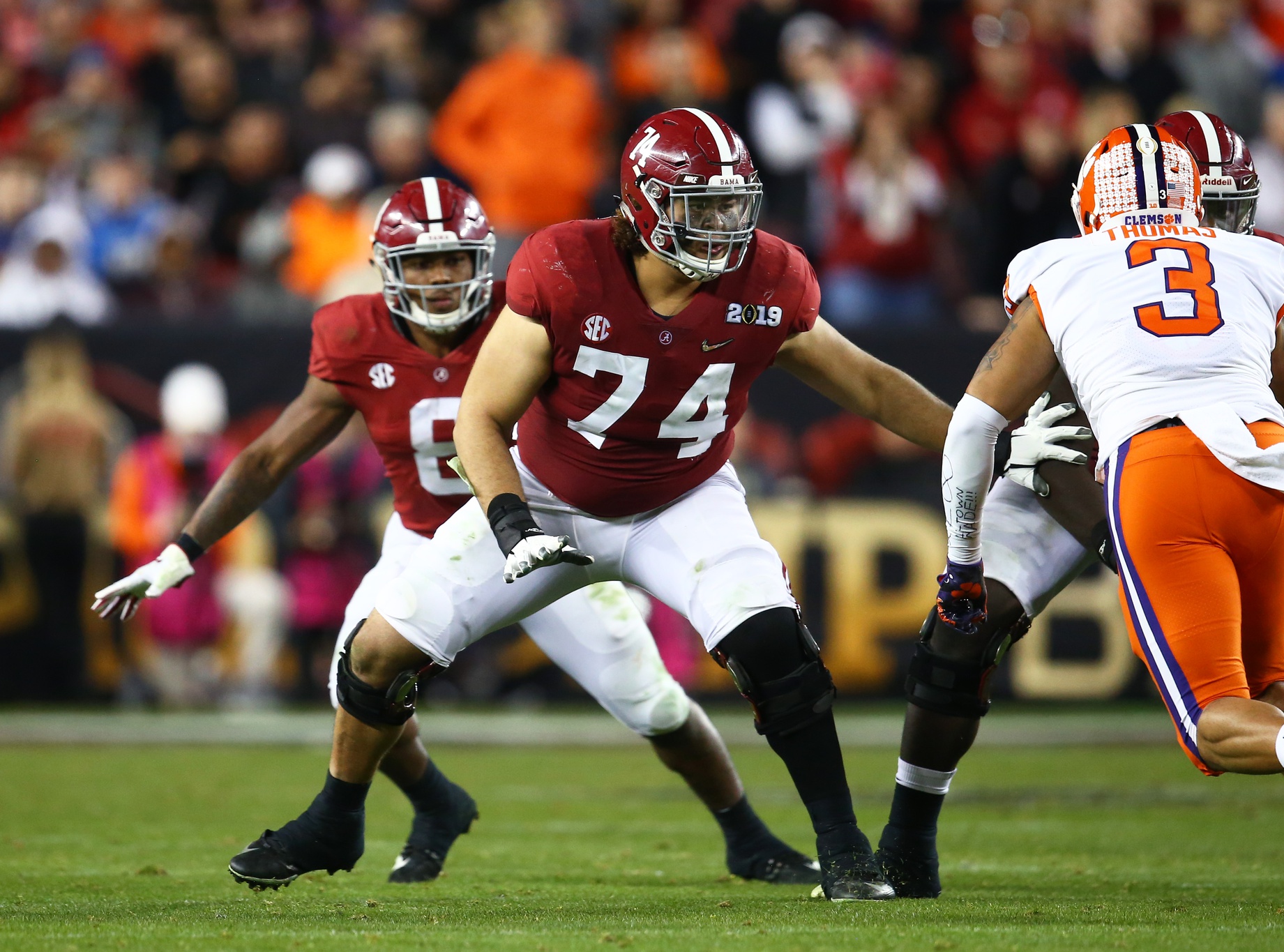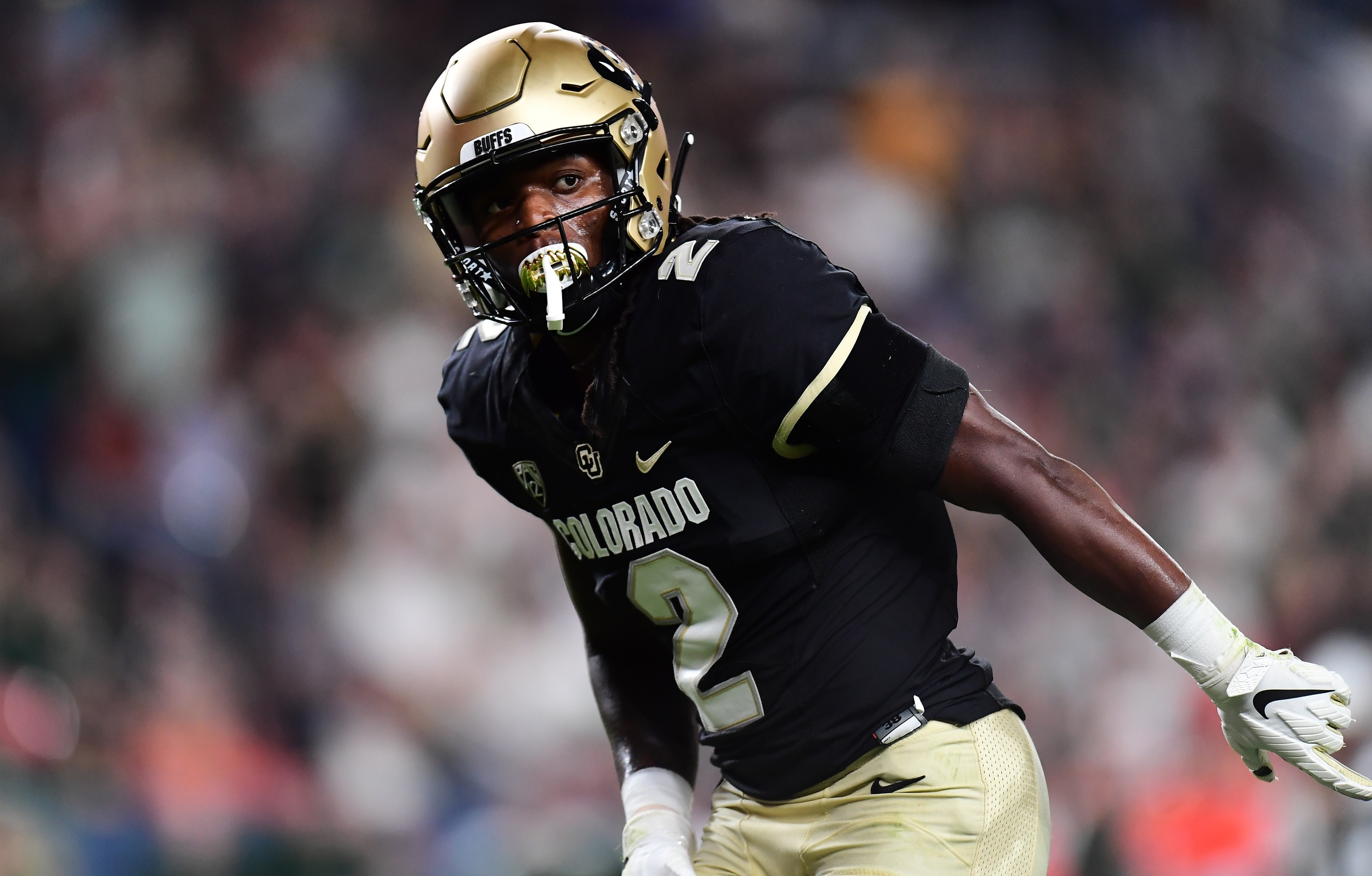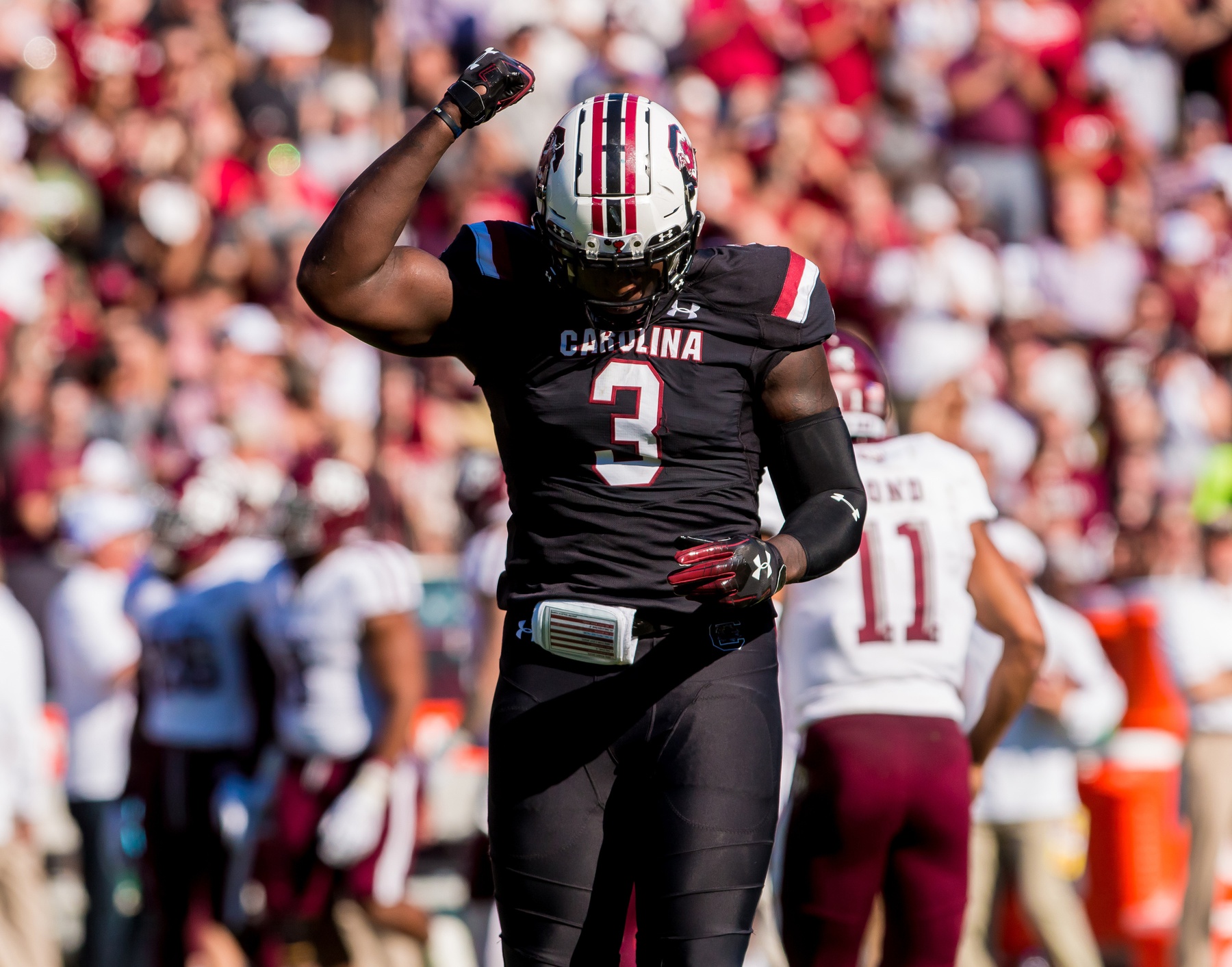It’s another PFF mock draft that focuses on what we would do rather than predicting what NFL teams will do on draft night. It’s important to look at all angles from a team-building standpoint, and the goal here is to maximize value in the draft while pointing toward winning games, much like the goal of the analytics mock. Here’s a look at how I would draft as GM of every team in Round 1 of the 2020 NFL Draft.
*There’s one trade included as the Dolphins move up to No. 2 while the Redskins add extra picks to move down in the first round. This is a move I would make as GM of both teams — it’s a win-win proposition.
[Editor's note: Check out PFF's 2020 Post-Free Agency Mock Draft and NFL Draft Big Board. PFF Elite subscribers can also download the 1,100-page 2020 NFL Draft Guide.]
1. CINCINNATI BENGALS — QB JOE BURROW, LSU
The consensus No. 1 pick, Burrow is coming off one of the best seasons in college football history and the best season we’ve graded since 2014. He throws accurately to all levels of the field, and he’s the kind of signal-caller the Bengals need to turn the franchise around. Burrow had the highest grades in the nation on all 10-plus yard throws, including a ridiculous 68.6% completion rate on passes in the intermediate (10-19-yard) range.
2. MIAMI DOLPHINS (TRADE WITH WASHINGTON REDSKINS) — QB TUA TAGOVAILOA, ALABAMA
There are two ways to generate incredible value with the No. 2 overall pick: draft a franchise quarterback or trade back and accumulate more picks. The Redskins should at least consider Tagovailoa, but a trade back is best for their long-term prospects, as they can now add three potential starters to a depleted roster.
As for the Dolphins, they’ve positioned themselves beautifully to make this move with three first-round picks in their arsenal. They’ll gladly package that extra draft capital to draft Tagovailoa, who has posted 90.0-plus passing grades in each of the past two seasons and spreads the ball around the field with strong accuracy. The biggest question mark is his health, as he’s been banged up multiple times throughout his college career, including his 2019 season-ending hip injury.
3. DETROIT LIONS — CB JEFFREY OKUDAH, OHIO STATE
There’s an obvious debate between Okudah and his teammate, Chase Young, but the Lions’ man-coverage attack desperately needs more options on the back end, and Okudah’s production and measurables make him the top cornerback on the PFF draft board. Okudah has excellent movement size, speed and movement skills — all excellent fits for what the Lions need opposite new cornerback Desmond Trufant on the outside.
4. NEW YORK GIANTS — EDGE CHASE YOUNG, OHIO STATE
This is a great scenario for the Giants, who get the best pass-rusher in the draft in Young and fill an immediate position of need. The Giants really need playmakers all over the defense, and Young’s 96.1 overall grade last season is the best we’ve seen since we started grading in 2014. He had a ridiculous 56 pressures (18 sacks, seven quarterback hits, 31 hurries) on just 320 rushes last season.

5. WASHINGTON REDSKINS (TRADE WITH MIAMI DOLPHINS) — OT ANDREW THOMAS, GEORGIA
Washington’s trade down allows it to fill two holes on a weak roster, starting with the left tackle of the future in Thomas. He’s the best combination of pass- and run-blocker in the draft, as he is the only tackle in the class to rank in the top three in both departments last season (89.0 pass-block grade, 91.4 run-block grade).
6. LOS ANGELES CHARGERS — QB JUSTIN HERBERT, OREGON
While Herbert doesn’t project as well as Burrow or Tagovailoa at the next level, the Chargers have an excellent roster aside from question marks with Tyrod Taylor as the listed starter. Herbert does his best work down the field in between the numbers, and wide receivers Mike Williams and Keenan Allen along with tight end Hunter Henry should play well with his skillset. Finding a solid quarterback is a risky proposition, and picking Herbert certainly is risky despite his excellent tools, but the payout is too great if he can put it all together.
7. CAROLINA PANTHERS — LB/S ISAIAH SIMMONS, CLEMSON
With linebacker Luke Kuechly retiring, adding a coverage playmaker is a high priority for the Panthers, and that’s exactly what Simmons brings to the table. He made high-level plays from the slot, both safety positions and in the box for Clemson — a skillset that will give the Panthers plenty of options as they rebuild their defense. I like Simmons as an early-down strong safety and a nickel/dime joker who can fill a game-plan specific role.
8. ARIZONA CARDINALS — OT TRISTAN WIRFS, IOWA
The DeAndre Hopkins trade may have freed the Cardinals up to focus on their right tackle spot, and the strength of the draft meshes well with that need. Wirfs played both left and right tackle at a high level at Iowa, finishing with the No. 4 overall grade in the nation last season (91.4).
9. JACKSONVILLE JAGUARS — WR JERRY JEUDY, ALABAMA
The Jaguars have work to do to improve in the pass game on both sides of the ball, and they take one of the best receivers in the draft in Jeudy with the first of their two first-round picks. Jeudy is the best route runner in the draft, giving Jacksonville an immediate threat out of the slot while also providing a downfield option when lined up on the outside to complement D.J. Chark.
10. CLEVELAND BROWNS — OT JOSH JONES, HOUSTON
Need-drafting is never the preferred option, but the Browns are well-positioned to fill their biggest need, left tackle, in this draft. They’d prefer to have Thomas or Wirfs here, and Alabama’s Jedrick Wills played right tackle in college, so we’ll go away from the draft board for a few reasons. The Browns already signed right tackle Jack Conklin this offseason, and while flipping sides of the line is not an insurmountable goal for Wills, it’s unnecessary with Josh Jones on the board. Jones has the fourth-best pass-blocking grade in the class (89.2), and he finished in the top three in the run game on both gap and zone runs.
11. NEW YORK JETS — OT JEDRICK WILLS, ALABAMA
The Jets don’t have a right tackle locked in right now, so Wills makes more sense for them here at pick No. 11. There’s a legitimate debate as to whether New York should focus more on skills players rather than adding another body on the offensive line, but its line is far from a finished product — especially long term. There should be another wide receiver available on the turn, so the Jets grab Wills here, who is an explosive run-blocker, though not as polished in pass protection as some of his peers in the class.

12. LAS VEGAS RAIDERS — WR CEEDEE LAMB, OKLAHOMA
In one of my favorite fits in the draft, Lamb pairs with quarterback Derek Carr to give the Raiders a viable option on the outside. Carr was at his best when he had Amari Cooper, and that chemistry led to Carr’s best seasons in 2015 and 2016. Lamb works the vertical route tree, back shoulder game and the intermediate middle — all areas that play to Carr’s skillset and should extract much-needed aggressiveness out of him.
13. SAN FRANCISCO 49ERS (VIA COLTS) — WR HENRY RUGGS, ALABAMA
The 49ers' offense has been built on speed, and they’ll find a way to use Ruggs' 4.2 speed with their current group of playmakers. Ruggs is a field-stretcher but is also capable of taking short passes to the house and doing damage in San Francisco’s end around/jet sweep game. After last year’s Super Bowl run, the 49ers must continue to add more playmakers to the offense, and Ruggs is a perfect fit with the pick they earned from the DeForest Buckner trade with the Indianapolis Colts.
14. TAMPA BAY BUCCANEERS — S GRANT DELPIT, LSU
The Buccaneers’ best-case scenario is seeing one of the top offensive tackles or wide receivers dropping to this spot, but they’re all off the board at this point. Delpit has been a playmaker in LSU's secondary, and he adds yet another piece to a Tampa Bay secondary that has gone from disastrous to promising in two years. Delpit’s missed tackles are certainly a concern — he’s had 36 over the last two seasons — but his ability to play free safety or cover tight ends is much needed on the back end for the Bucs.
15. DENVER BRONCOS — CB KRISTIAN FULTON, LSU
Another team that would love to take one of the speedy receivers should they fall to pick No. 15, the Broncos will attack another important position with Fulton. The depth chart features newly acquired cornerback A.J. Bouye on one side and a group of unproven, younger players, so Fulton could start right away and allow Bryce Callahan to man the slot. Fulton had the fourth-best coverage grade in the draft class last year (86.3), and he has forced incompletions on 27.4% of his targets over the past two years, best in the class.
16. ATLANTA FALCONS — CB C.J. HENDERSON, FLORIDA
The Falcons could be primed to double up at cornerback in this draft, and they’ll kick things off with Henderson. He’s one of the most athletic corners in the draft, and it shows up at the catch point, where he’s broken up 21.8% of his targets over the past two years — 11th-best in the class. Henderson will still lose a few reps at the catch point against bigger receivers. He did his best work in 2018, not last season, but he is excellent in off coverage and he has the tools to mirror even the best route runners.
17. DALLAS COWBOYS — EDGE A.J. EPENESA, IOWA
While cornerback could be the play here for Dallas, especially if they’re thinking two years ahead, it would have been nicer to have Fulton or Henderson still on the board. They go with Epenesa, who has two years of excellent production as a pass-rusher, despite taking a step back last year while taking on more of an every-down role. Epenesa plays with great power and he could produce as an interior rusher in nickel situations.
18. WASHINGTON REDSKINS (VIA STEELERS) — WR LAVISKA SHENAULT, COLORADO
The Redskins now walk away from the first round with two starters on offense rather than one Chase Young, and that’s a win from a team-building standpoint. Shenault adds an offensive weapon who can line up outside or in the slot while creating after the catch with running back-like skills (7.4 YAC/reception on 150 career catches).

19. LAS VEGAS RAIDERS (VIA BEARS) — S XAVIER MCKINNEY, ALABAMA
The Raiders have completely retooled their secondary over the past two years, and McKinney adds another important piece, as he can play free safety while also covering the slot or tight ends when needed. He allows last year’s first-rounder, Johnathan Abram, to play in more of a box role that fits his skillset while earning the third-best coverage grade in the class when lined up at free safety.
20. JACKSONVILLE JAGUARS (VIA RAMS) — CB TREVON DIGGS, ALABAMA
The cornerback value looks good at this point in the draft, and in the real draft, the Jaguars should have even more options — PFF generally values corners more than the NFL. Diggs is the next best option on the board, as he uses his 6-foot-2 frame well and finished with the second-best coverage grade among corners in the class when targeted in single coverage last season.
21. PHILADELPHIA EAGLES — WR TEE HIGGINS, CLEMSON
The Eagles still have a solid group of receivers on paper, but there’s an obvious need for an infusion of youth. Higgins has the catch radius that plays well with an aggressive quarterback like Carson Wentz, and he adds yet another red-zone weapon to the Eagles' offense. Higgins had the seventh-best receiving grade in the class when targeted on single coverage in 2019.
22. MINNESOTA VIKINGS (VIA BILLS) — WR JALEN REAGOR, TCU
Wide receiver and cornerback are two areas the Vikings will attack in the draft, and Reagor brings a vertical threat to replace the departed Stefon Diggs. He plays big down the field, catching 46.0% of his contested targets over the past two years while averaging 15.1 yards/catch in college, where his production was limited by poor quarterback play.
23. NEW ENGLAND PATRIOTS — WR DENZEL MIMS, BAYLOR
It’s out of character for the Patriots to draft a wide receiver in the first round once again, but they still need help on the outside, where Mims adds more of a vertical threat. It would free up last year’s first-rounder N’Keal Harry to potentially see more snaps inside or play to his skillset on gimmick plays with the ball in his hands. Mims was productive at Baylor, but even more productive this offseason with outstanding NFL Combine and Senior Bowl performances.
24. NEW ORLEANS SAINTS — DT DERRICK BROWN, AUBURN
Brown is expected to come off the board earlier in the first round, but positional value has pushed him to the back end of Day 1 in this mock. Brown projects as the best interior run defender in the draft and he’s a good, not great, pass-rusher. He had the fourth-best pass-rush grade in the class last year (90.4) and adds another big body up front to the strong New Orleans defensive line.
25. MINNESOTA VIKINGS — CB JAYLON JOHNSON, UTAH
The Vikings attack their other major need with Johnson, who had the ninth-best coverage grade among draft-class cornerbacks last season. Johnson has good size and can play press or off coverage while working through the receiver’s hands down the field. Johnson is the start of what should be multiple picks at cornerback in this draft for the Vikings.
26. MIAMI DOLPHINS (VIA TEXANS) — S ASHTYN DAVIS, CAL
After the heavy investment at cornerback, the Dolphins turn to safety, where Davis has the range to shrink the field. He played mostly free safety at Cal, and that’s where he projects at the next level in the Miami defense. Davis didn’t get to work out at the NFL Combine, but he flies around the field, especially when patrolling the deep middle.
27. SEATTLE SEAHAWKS — DI JAVON KINLAW, SOUTH CAROLINA
Kinlaw adds size and length up front for the Seahawks, who could use another interior pass-rushing threat. He had the second-best pass-rush grade and the best win rate among interior rushers in the class, using his length to cause problems all over the offensive line. Seattle still needs help on the edge, but Kinlaw brings some versatility to move up and down the defensive front.

28. BALTIMORE RAVENS — EDGE JULIAN OKWARA, NOTRE DAME
Even with the Ravens franchising Matt Judon, Okwara is a fantastic fit for their defense. They have the most versatile defense in the league, and Okwara is an edge rusher with coverage-dropping athleticism. The Ravens can continue their “positionless football” approach on defense with Okwara, who had an excellent 90.4 pass-rush grade a year ago to go with the movement skills to play off-ball linebacker if needed. The Ravens will use that skillset to keep opposing offenses off balance.
29. TENNESSEE TITANS, CB JEFF GLADNEY, TCU
After a few years with a solid cornerback group, the Titans need to restock now that Logan Ryan is a free agent and Adoree Jackson is in the last year of his contract. Gladney has the speed and ball skills to play on the outside, and he allowed just 47.0% of passes to be completed into his coverage in the pass-heavy Big 12.
30. GREEN BAY PACKERS — WR JUSTIN JEFFERSON, LSU
There are some questions to Jefferson’s game after he dominated zone coverage in the middle of the field at LSU, but he’s a crafty route runner with excellent ball skills. His middle-of-the-field prowess could be perfect for quarterback Aaron Rodgers, who could stand to take more chances over the middle. Jefferson could play in the slot or on the outside with his size and route running, though he’s more of a projection to the outside due to limited opportunities in college.
31. SAN FRANCISCO 49ERS — DI JORDAN ELLIOTT, MISSOURI
Elliott is still flying under the radar after posting the top pass-rushing grade in the class a year ago (91.1). He wins with burst, pad level and hand usage, a nice combination that should help mitigate the loss of DeForest Buckner — and at a much cheaper price.
32. KANSAS CITY CHIEFS — LB PATRICK QUEEN, LSU
While the cornerback depth chart doesn’t look great on paper for the Chiefs, their zone-heavy defense did a fine job of taking away the middle of the field a year ago, and Queen will only help in that regard. He brings great range and athleticism to the back-seven, destroying underneath routes and perhaps just getting started after playing only 1,035 snaps in college.



 © 2025 PFF - all rights reserved.
© 2025 PFF - all rights reserved.